Galaxy Note 8 vs iPhone 7: Which flagship should you plump for?
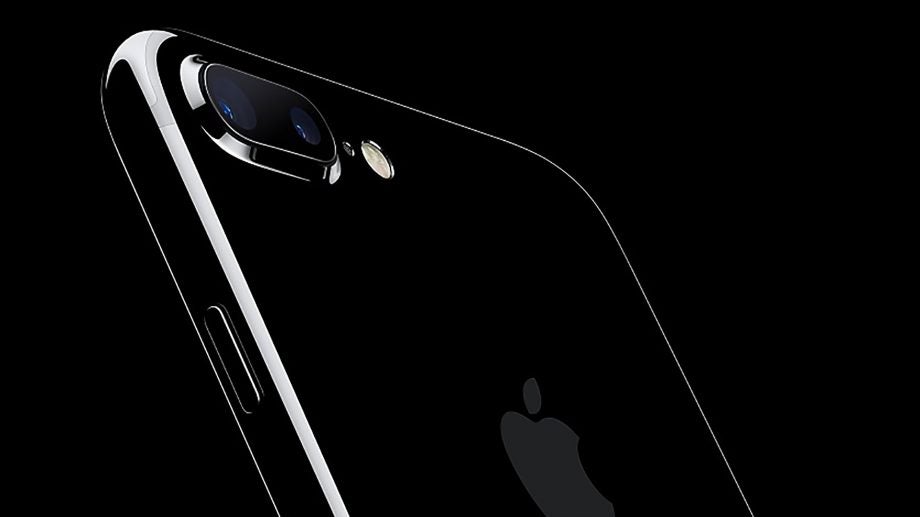
Galaxy Note 8 vs iPhone 7: Which flagship is best?
The smartphone duopoly continues as Samsung faces off against Apple in an ultimate clash of their respective flagship smartphones. Our guide reveals all you need to know about how the Galaxy Note 8 compares to the iPhone 7 and iPhone 7 Plus.
In late 2016, Apple debuted the iPhone 7 and iPhone 7 Plus, two top-end smartphones that introduced a wide range of new features. For instance, we saw Apple finally offer waterproofing on an iPhone, and the Plus model even scored a dual camera.
It was around that same time Samsung released (and swiftly recalled) the Galaxy Note 7, an ill-fated phone that was culled after a battery flaw caused spontaneous fires.
This year, Samsung hopes to do much better, and has now revealed the Galaxy Note 8, the company’s most powerful and feature-packed phone to date. With bleeding-edge hardware and a futuristic ‘Infinity Display’ design, the new Note 8 is a force to be reckoned with.
But which phone is better? Let’s examine the details.
Related: Galaxy Note 8
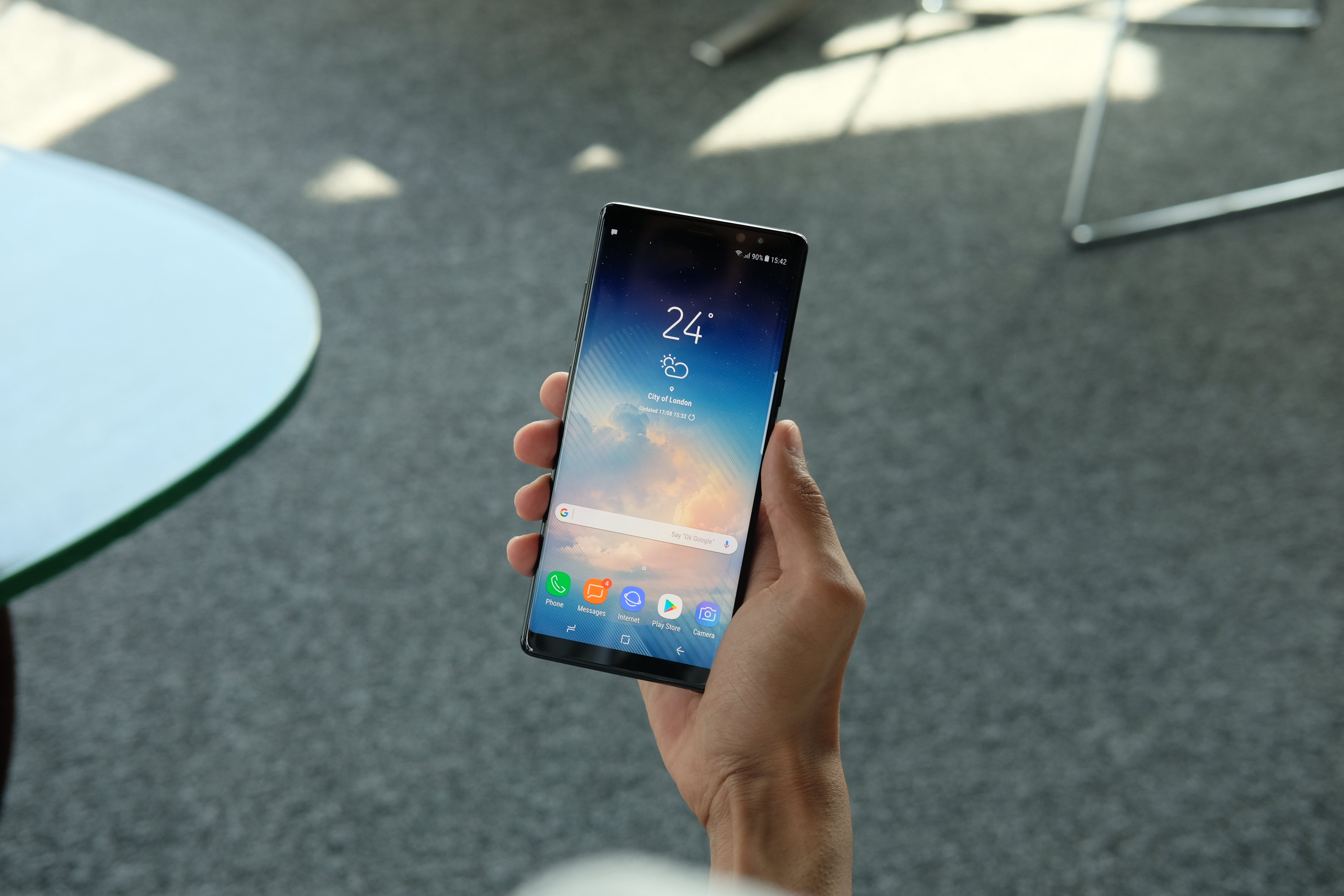
Credit: Max Parker / Trusted Reviews
Galaxy Note 8 vs iPhone 7 Design: What’s the difference?
The iPhone is a tried-and-tested design that most of you will be familiar with. Both the iPhone 7 and iPhone 7 Plus look almost identical, with curved edges, a flat back, and a relatively thick bezel.
They have some notable features, including a Home button on the front with a built-in Touch ID fingerprint scanner, as well as a protruding camera on the back, which means the phone can be rocked when laid flat on a surface.
The iPhone is very thin and light, with a thickness of 7.1mm and a weight of just 138 grams – the latter is mostly thanks to its small form factor. The iPhone 7 Plus, meanwhile, is nearly 50% heavier at 188 grams, but only marginally thicker at 7.3mm.
The Galaxy Note 8, by comparison, is both thicker and heavier than the iPhone 7 Plus – although it has a bigger screen, too. The handset measures in a 8.6mm from a profile view, and weighs a hefty 195 grams, which makes it one of the heaviest smartphones on the market.
Related: Best Android apps
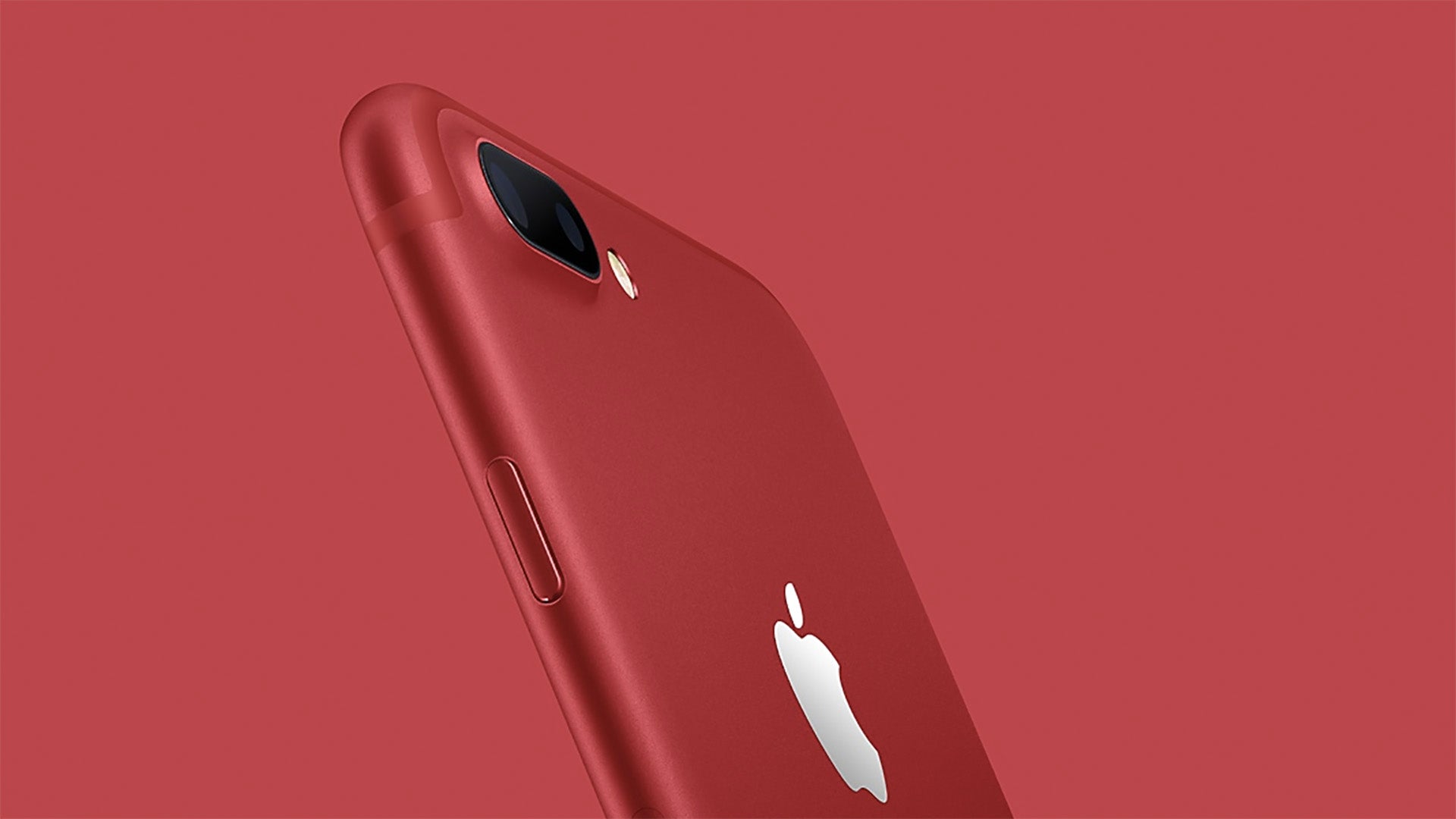
Credit: Apple
The main advantage of the Note 8, however, is its futuristic design. Like the Samsung Galaxy S8 before it, the Note 8 features Samsung’s new ‘Infinity Display’ design. This means there’s very little bezel on the front – and no Home button either. With curved edges and an all-screen aesthetic, the Galaxy Note 8 is undoubtedly one of the most attractive handsets out there.
Overall, it seems fair to say that the Galaxy Note 8 looks better – and certainly more modern – than both the iPhone 7 and iPhone 7 Plus. But its gargantuan size (thanks to the 6.3-inch screen) means it won’t be suited to everyone, with some customers almost certain to prefer the dinky 4.7-inch display on an iPhone 7.
Dimensions:
- Galaxy Note 8: 162.5 x 74.8 x 8.6mm | 195 grams
- iPhone 7: 138.3 x 67.1 x 7.1mm | 138 grams
- iPhone 7 Plus: 158.2 x 77.9 x 7.3 | 188 grams
Galaxy Note 8 vs iPhone 7 specs: Is the Note 8 or iPhone 7 Plus more powerful?
Screen: The Samsung Galaxy Note 8 has the biggest screen of the trio, with a 6.3-inch display squeezed into a surprisingly small body – courtesy of the Infinity Display design. As usual, Samsung has opted for a Super AMOLED display, which means you’ll be getting a wide colour gamut and high dynamic range – that means more colours, plus better lights and darks. The Samsung screen is also curved, which gives it a futuristic look and feel.
By comparison, Apple’s handsets offer far less screen real-estate. The iPhone 7 Plus has a fairly middling 5.5-inch panel, while the iPhone 7 has a frankly tiny 4.7-inch screen. Both phones use conventional LED-backlit LCD panels, which means they have less potential for quality image output compared to Samsung’s OLED tech.
Where Samsung’s phone really outpaces the Apple fare is in terms of display resolution, however. The Galaxy Note 8 screen boasts an impressive 1440 x 2960 pixels, which works out at a pixel density of 523-pixels-per-inch (ppi).
The iPhone 7 Plus, meanwhile, has a Full HD 1080 x 1920-pixel screen with a 401ppi pixel density, which isn’t exactly exciting. And the iPhone 7 has a very unimpressive 750 x 1334-pixel screen, resulting in a lowly pixel density of 326ppi – not great by 2017’s standards.
This all means that while the iPhone will certainly be fine for daily use, the Galaxy Note 8 can offer a much sharper and clear image overall.
Related: iPhone 8
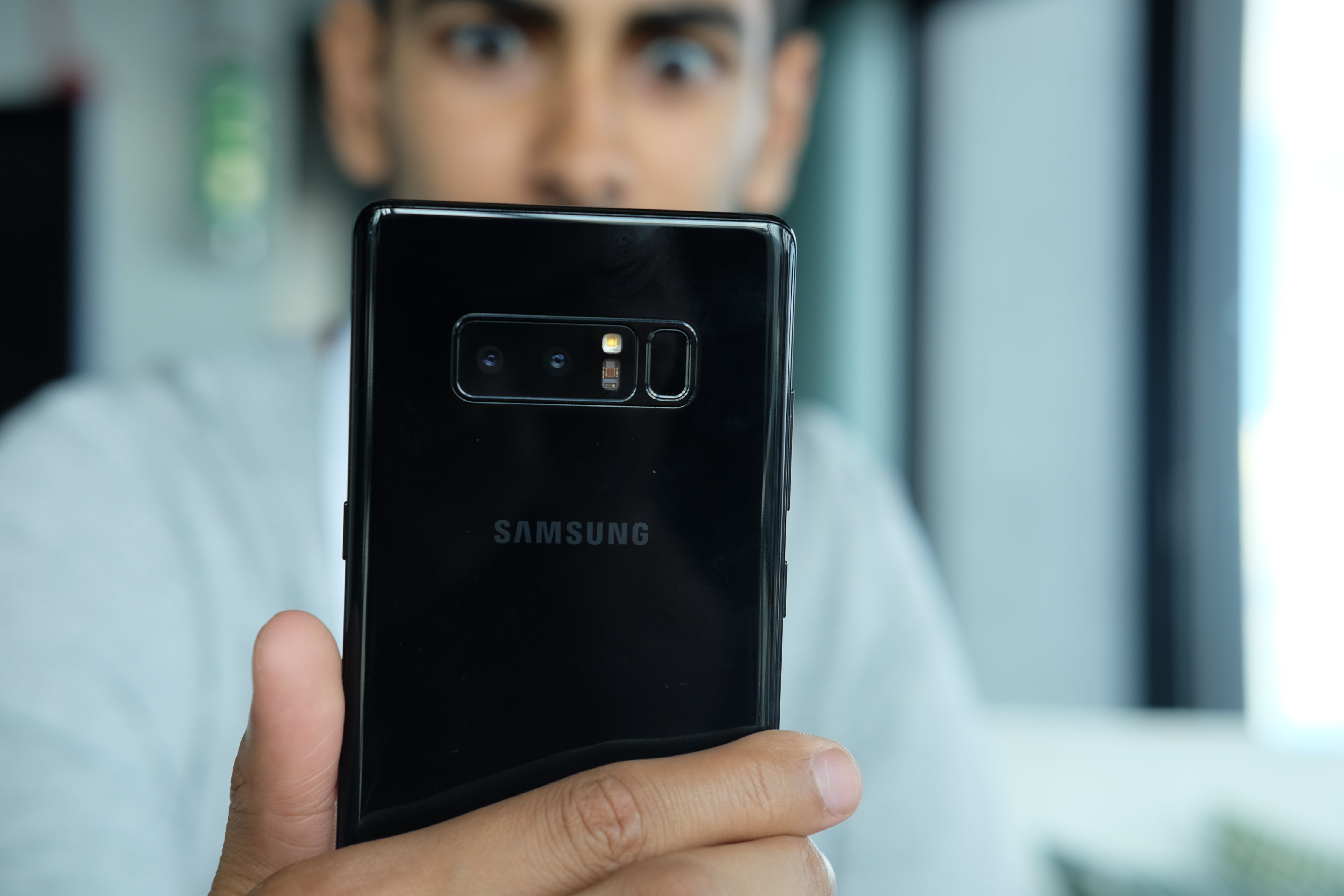
Credit: Max Parker / Trusted Reviews
Performance: Until we can actually test the Galaxy Note 8 using benchmarking software, there’s only so much we can say about performance.
The Samsung Galaxy Note 8 is used chips we’ve already seen out in the wild; depending on your market, you’ll either get Qualcomm’s Snapdragon 835 chipset or the Samsung Exynos 8895 processor. Both featured in the Galaxy S8, so we know their performance is up to scratch.
The two iPhone models, by contrast, use Apple’s own custom-built A10 Fusion chipset, which has been designed and optimised specifically for Apple phones – that means performance is very slick.
The main advantage that Samsung’s phone has is that both of its chips were built using a highly efficient 10nm manufacturing process, compared to the somewhat aged 16nm process used to build the Apple A10 Fusion.
When we talk about manufacturing process, the smaller the measurement you see, the better the chip is – typically, anyway. That’s because the measurement is the distance between transistors, the tiny electronic switches on a chip that perform computations – the bits that get stuff done. So the smaller the distance, the more transistors can be crammed on to a chip, meaning you can get either better performance or lower power-consumption. Either way, it’s a win.
It’s also worth noting that Samsung has stuff an incredible 6GB of RAM inside its phone, compared to the 2GB offered by the iPhone 7 and 3GB on the iPhone 7 Plus. However, we don’t expect we’ll see massive performance disparity in real-world usage; Apple devices have highly-optimised software, so less computing heft is required overall.
Finally, the Samsung Galaxy Note 8 is only available in a 64GB storage variant. The base storage on the iPhone, by comparison, is 32GB, but there are also 128GB and 256GB variants available on both models, so Apple is winning when it comes to choice of storage capacity.
Related: Best Galaxy Note 8 deals

Credit: Apple
Camera: As with performance, we’re limited on what we can say about the camera on the Note 8; we’ll need to conduct real-world tests to get an idea of Samsung’s Note 8 photography capabilities.
On paper, however, it looks good. The Galaxy Note 8 comes fitted with a dual-lens camera, which is a first for Samsung flagships. One of the cameras has a 12-megapixel telephoto lens with a f/2.4 aperture and optical image stabilisation (OIS). The other is a wide-angle f/1.7 shooter that also features OIS – it’s actually the same camera on the Galaxy S8, for reference. This means we should see very impressive low-light performance and great depth-of-field potential.
The iPhone 7 camera is fairly respectable, offering 12-megapixel capture, a great f/1.8 aperture and optical image stabilisation. But the iPhone 7 Plus is the real star, with a 12-megapixel dual-camera arrangement that makes use of one f/1.8 OIS shooter and another with an f/2.8 aperture (but no OIS).
On paper, it appears as though the Galaxy Note 8 setup has the edge, but we’ll have to see how well Samsung has optimised its components and image processing technology first.
Battery Life: One of our biggest bug bears with the iPhone 7 was its unimpressive battery life; that’s arguably because of the small 1,960mAh cell on board. The iPhone 7 Plus, however, fared better, boasting a huge 2,900mAh cell.
But the Galaxy Note 8 has an even bigger battery, with a cell capacity of 3,300mAh. That doesn’t necessarily mean battery life will be better than the iPhone 7 Plus, mind – that’ll depend on a number of factors. For instance, the Galaxy Note 8 technically has a more efficient chip on board, but also uses a larger and more pixel-dense display panel. We’ll need to conduct our own tests before coming to a proper conclusion here.
Features: Smartphone performance is already fantastic, so phone makers are increasingly turning to funky features to flog their handsets.
The Galaxy Note 8 is stuffed full of quirky tools, the most notable of which are as follows:
- Fingerprint Scanner
- IP68 waterproofing
- Iris scanner
- 3.5mm headphone jack
- S-Pen stylus
The problem for Apple is that both of its iPhones have very few of these additional features. The fingerprint scanner has long been a core part of Apple design, so that’s fine – but there’s no iris scanner available on either iPhone model.
What’s more, Apple doesn’t offer a stylus either, and scrapped the 3.5mm headphone jack on its latest phone models, forcing users to either buy new wireless headphones (or ones with a Lightning connector), or purchase an adaptor.
Finally, even though the iPhone 7 is waterproof, it’s technically less waterproof than the Galaxy Note 8. That’s because the Galaxy Note 8 is IP68-certified, which means it can survive at depths of 1.5 metres for 30 minutes – better than the 1-metre depth confirmed by the iPhone’s IP67 certification.
If you’re looking for a powerful, feature-crammed phone, it seems that the Galaxy Note 8 is the way to go.
Related: Best smartphone
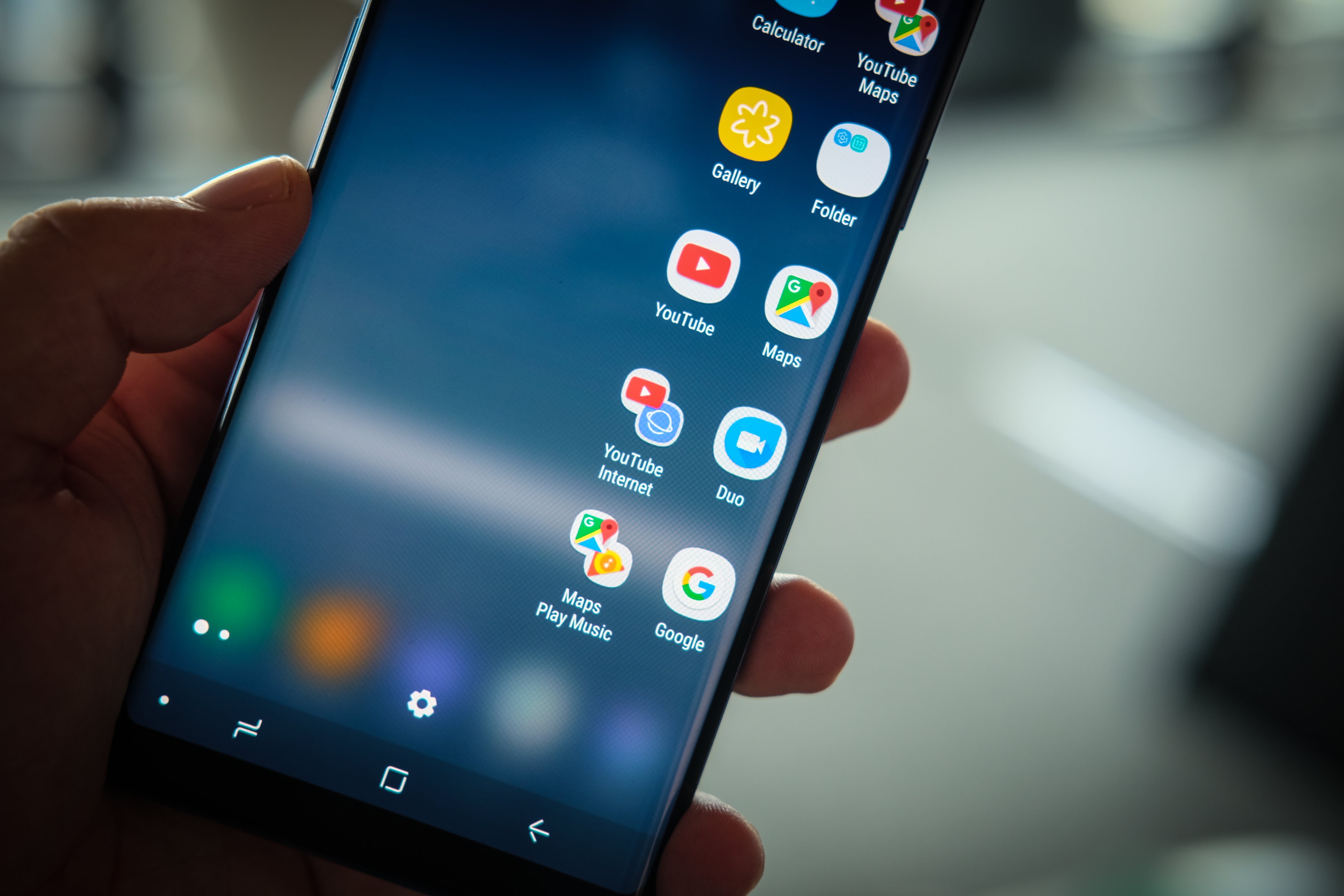
Credit: Max Parker / Trusted Reviews
For a full spec comparison, check out the table below:
| Samsung Galaxy Note 8 | Apple iPhone 7 | Apple iPhone 7 Plus | |
|---|---|---|---|
| Screen | 6.3-inch Super AMOLED curved Infinity Display | 4.7-inch LED-backlit IPS LCD display | 5.5-inch LED-backlit IPS LCD display |
| Display | 1440 x 2960 pixels (523ppi) | 750 x 1334 pixels (326ppi) | 1080 x 1920 pixels (401ppi) |
| Chipset | Qualcomm Snapdragon 835 / Samsung Exynos 8995 | Apple A10 Fusion | Apple A10 Fusion |
| Storage | 64GB (plus MicroSD slot) | 32 / 128 / 256GB | 32 / 128 / 256GB |
| Memory | 6GB | 2GB | 3GB |
| Rear Camera | 12MP dual (1x telephoto f/2.4 OIS / 1x wide-angle f/1.7 OIS) | 12MP camera (f/1.8 OIS) | 12MP Dual (f/1.8 OIS / f/2.8) |
| Battery Capacity | 3300mAh | 1960mAh | 2900mAh |
| Fingerprint Scanner | Yes | Yes | Yes |
| Waterproofing | IP68 certification | IP67 certification | IP67 certification |
| Iris Scanner | Yes | No | No |
| Headphone Jack | Yes (3.5mm) | No | No |
| Charging Port | USB Type C | Lightning | Lightning |
| Stylus | S-Pen (4096 levels of pressure) | N/A | N/A |
| Colours | Midnight Black (UK), Maple Gold (UK), Orchid Grey, Deep Sea Blue | Jet Black, Black, Silver, Gold, Rose Gold, Red | Jet Black, Black, Silver, Gold, Rose Gold, Red |
Galaxy Note 8 vs iPhone 7 Price: Is the Note 8 or iPhone 7 Plus better value for money?
The Samsung Galaxy Note 8 is priced at a blisteringly high £869, which is far higher than the launch pricing for both the Samsung Galaxy S8 (£689) and Samsung Galaxy S8+ (£779).
Apple’s handsets, meanwhile, are priced relatively fairly, with the iPhone 7 costing £599 and the bigger iPhone 7 Plus priced at £719.
As it stands, the Galaxy Note 8 may be more powerful than Apple’s phones on paper, but it’s also significantly more expensive.
Pre-Order: Samsung Galaxy 8 Note on Vodafone (4GB) – £200 upfront, £36/month
Pre-Order: Samsung Galaxy 8 Note on O2 (5GB) – £150 upfront, £39/month
Pre-Order: Samsung Galaxy 8 Note on EE (10GB) – £150 upfront, £42.99/month
Related: Best Android phones
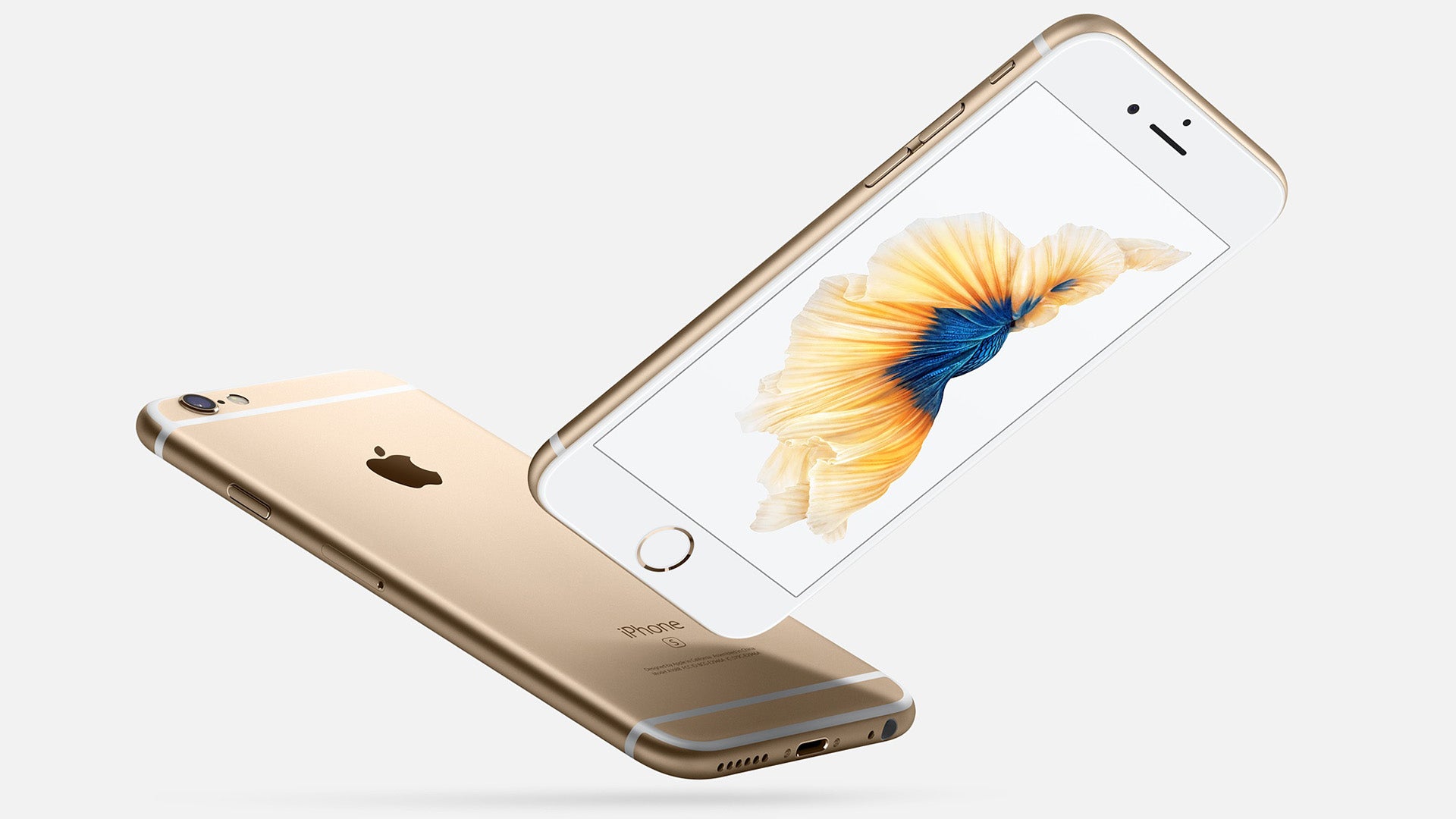
Credit: Apple
Galaxy Note 8 vs iPhone 7 Summary: How do the Note 8 and iPhone 7 Plus compare?
For a quick breakdown of the key differences between the phones, here’s what you need to know.
Design: The iPhone 7 has a hugely popular design, with curved edges, a flat back, and a small body. The Galaxy Note 8, by comparison, is far bigger, and offers a futuristic all-screen design that will woo enthusiasts.
Specs: On paper, the Galaxy Note 8 seems to beat the iPhone 7 and iPhone 7 Plus in terms of performance, camera specs, and features alike – but we’ll need to wait for real-world tests before choosing a true winner.
Price: The iPhone 7 costs £599, while the Plus model is priced at £719. But the Galaxy Note 8 trumps them both with a staggeringly high £869 price point – ouch!
Related: Game of Thrones season 7
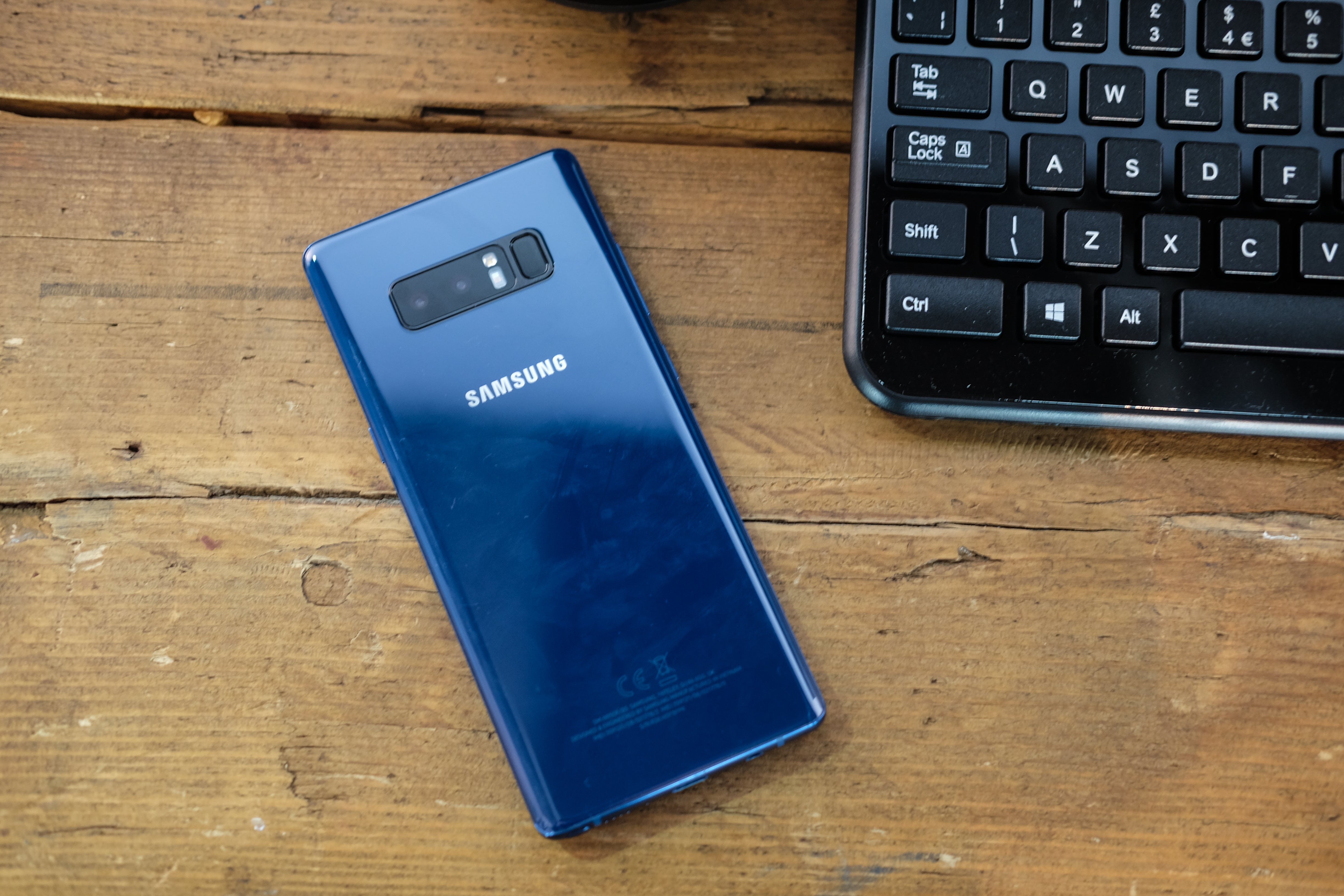
Credit: Max Parker / Trusted Reviews
Do you prefer the Galaxy Note 8 or the iPhone 7? Let us know via Facebook or Twitter.


